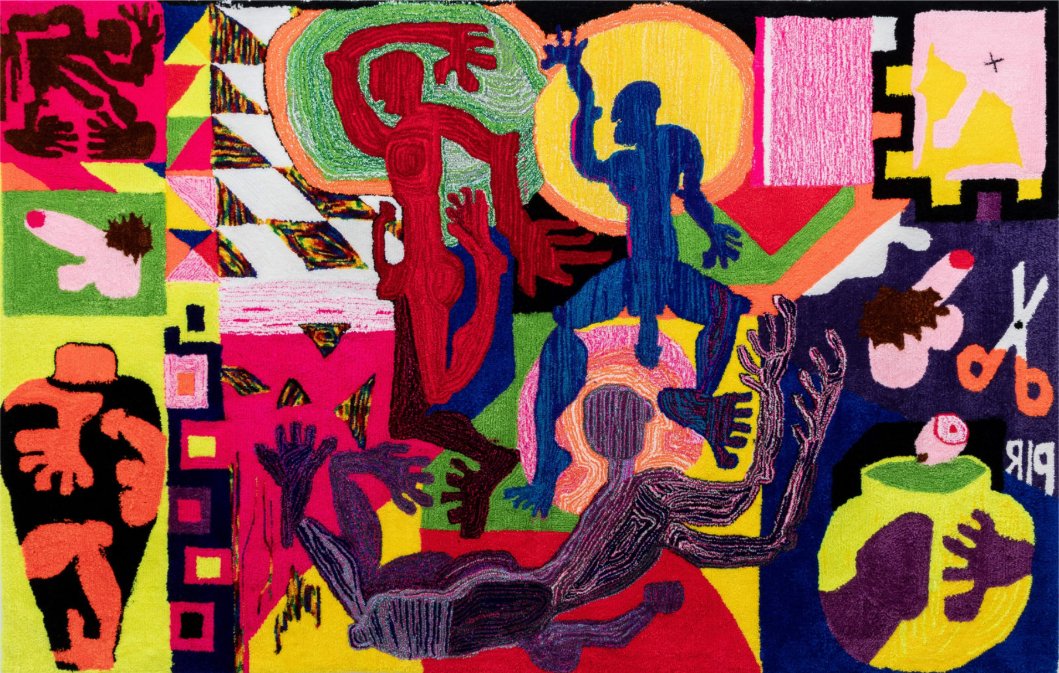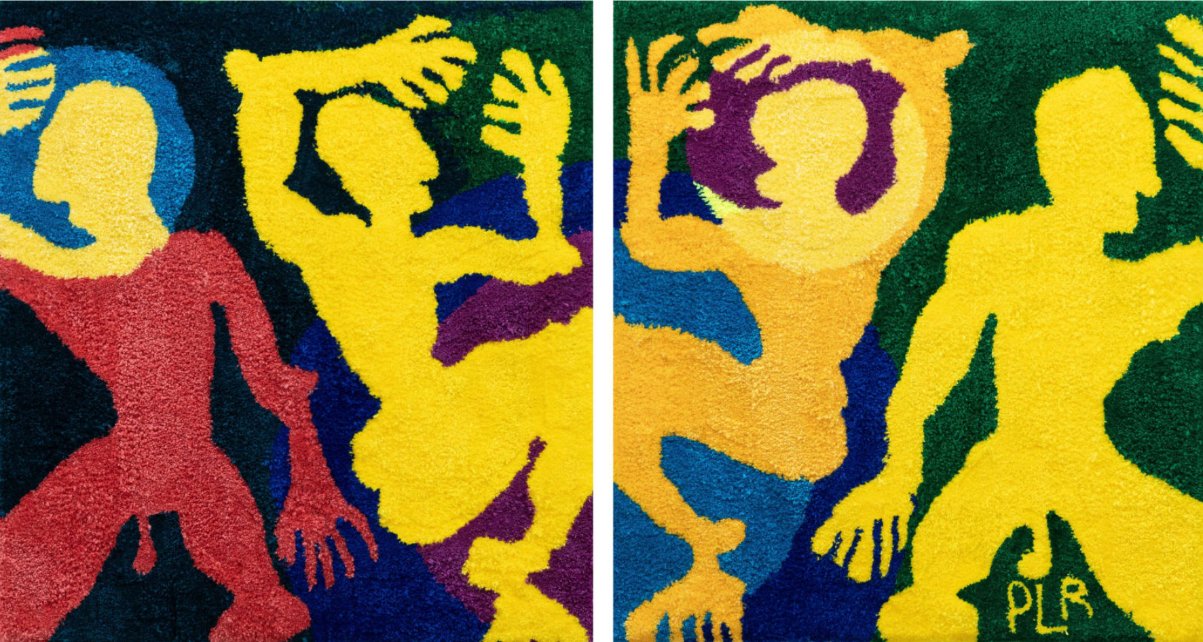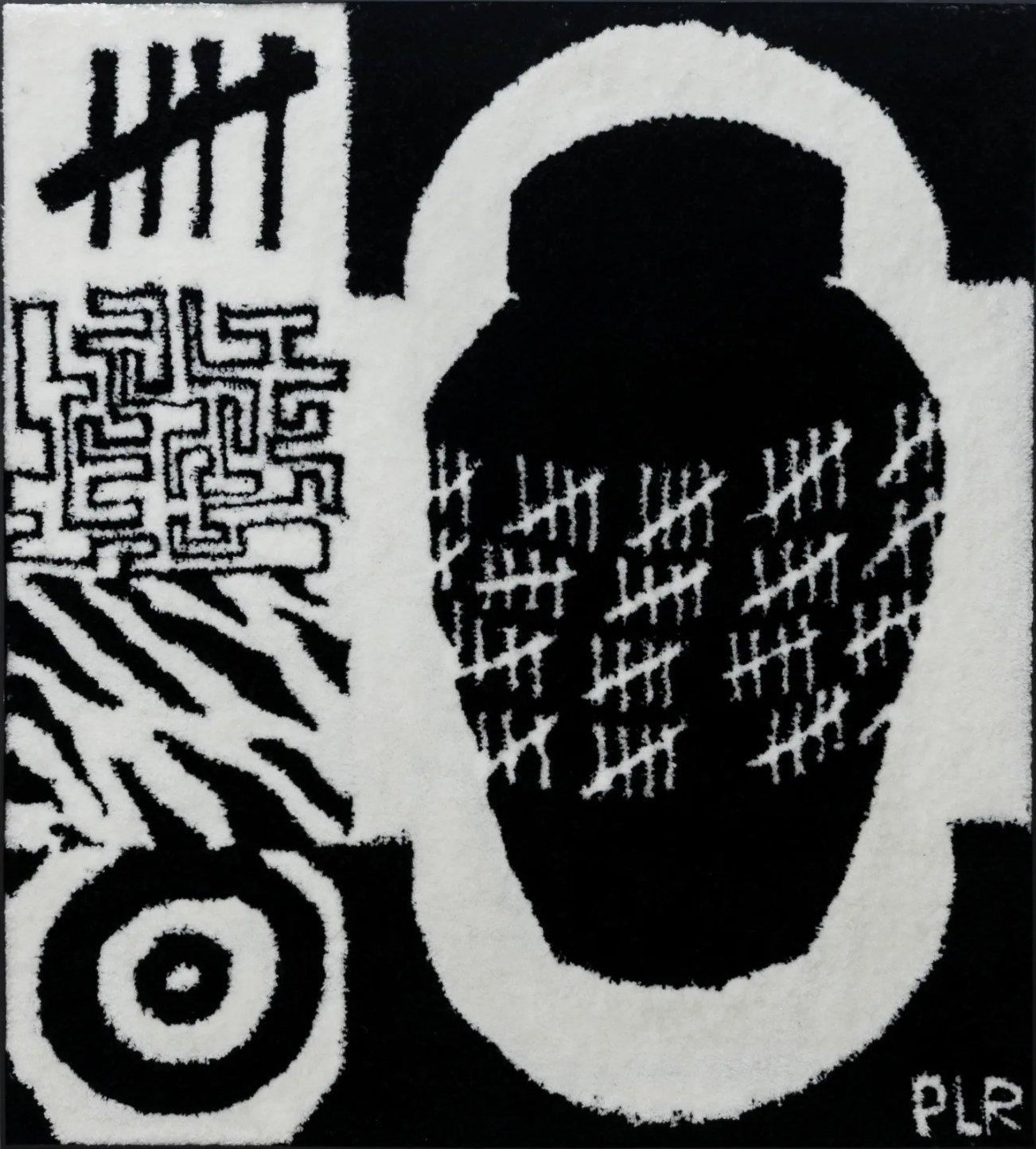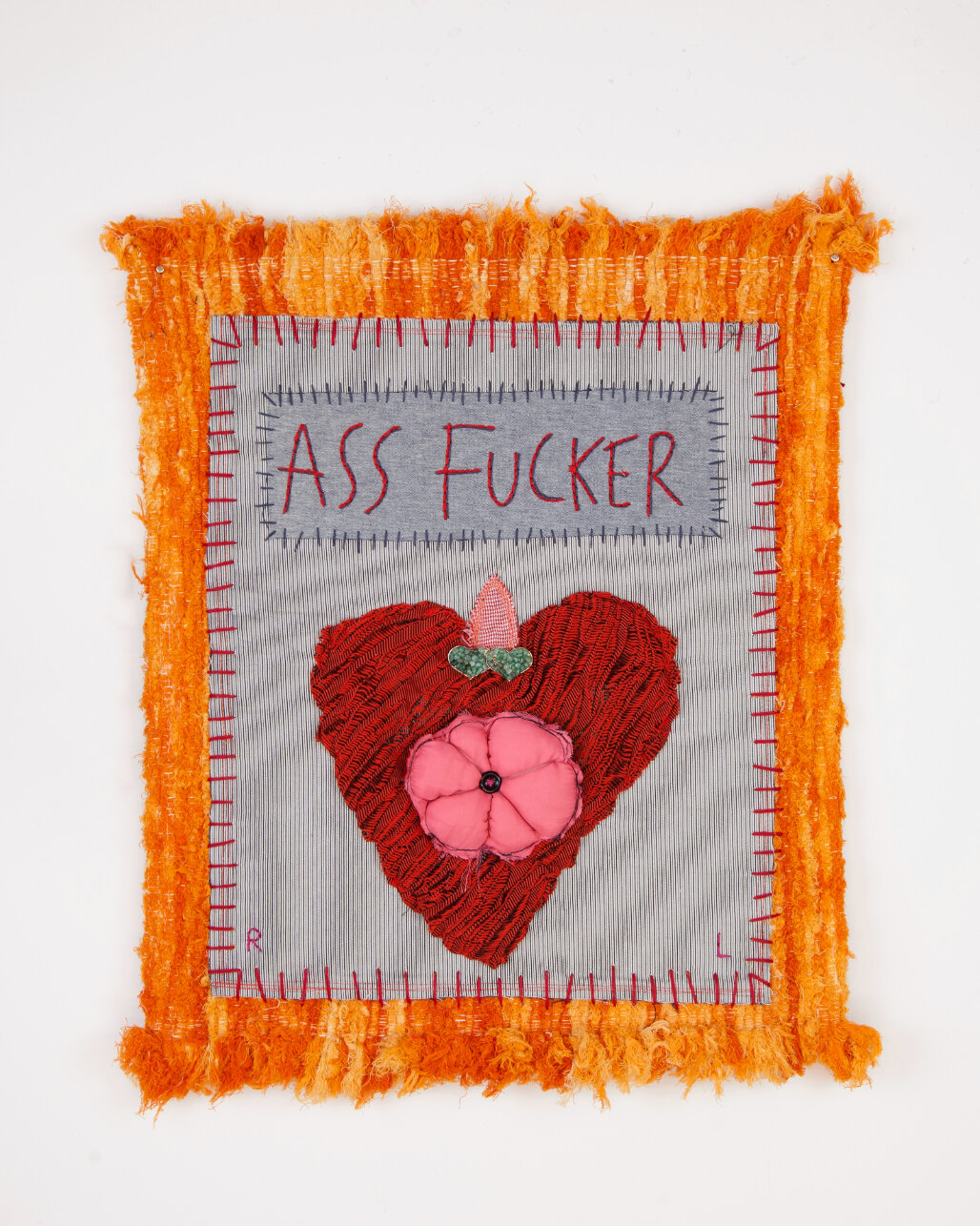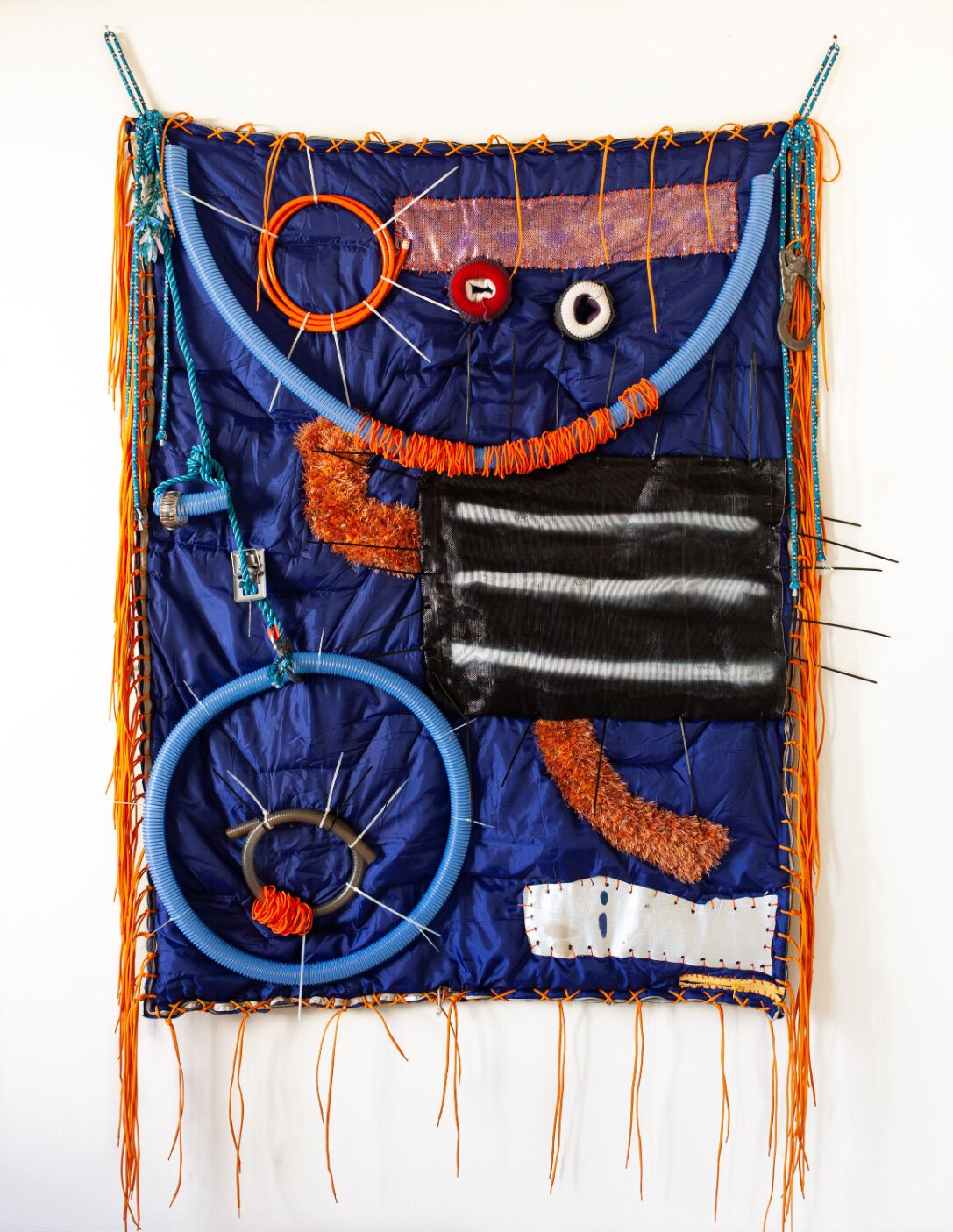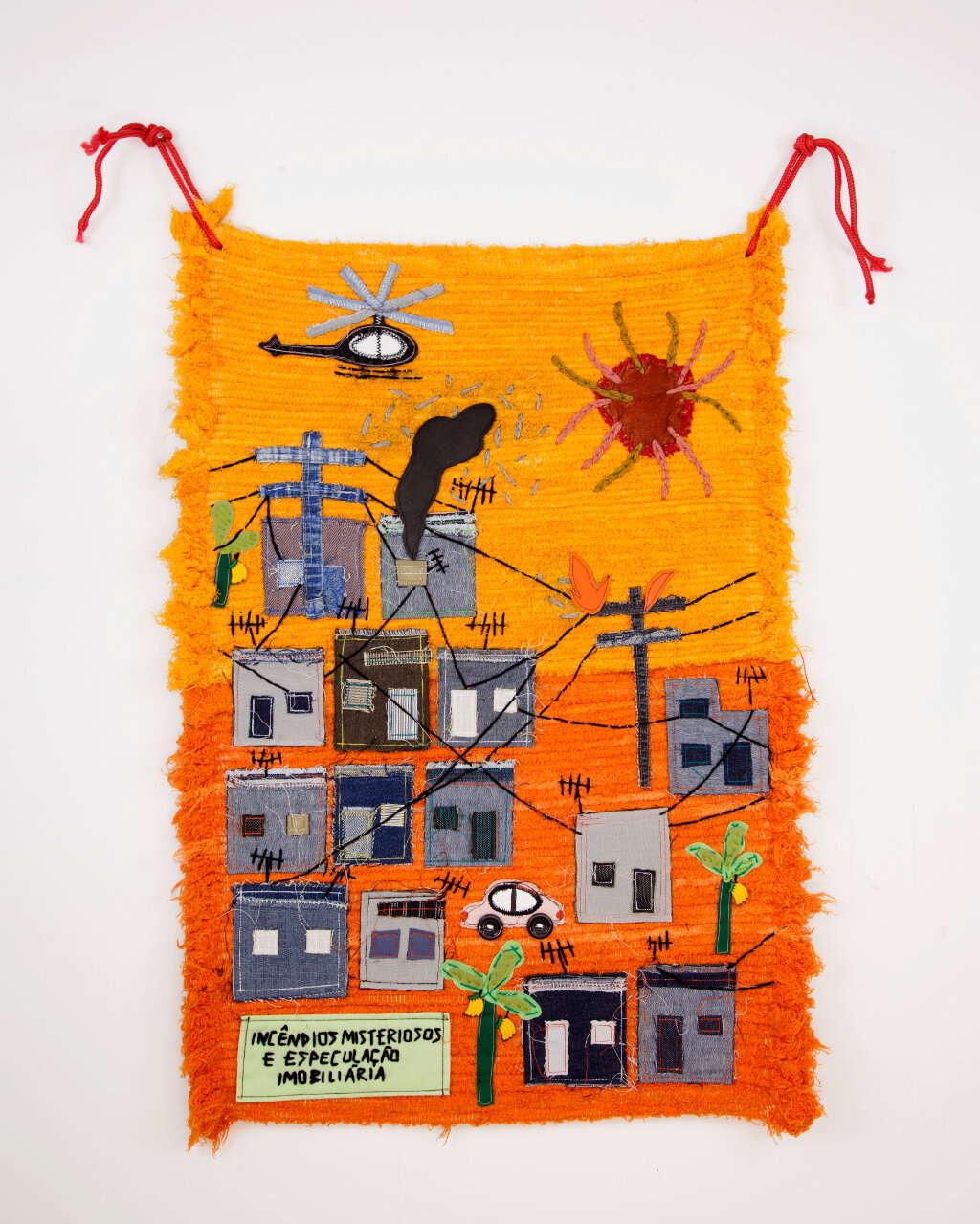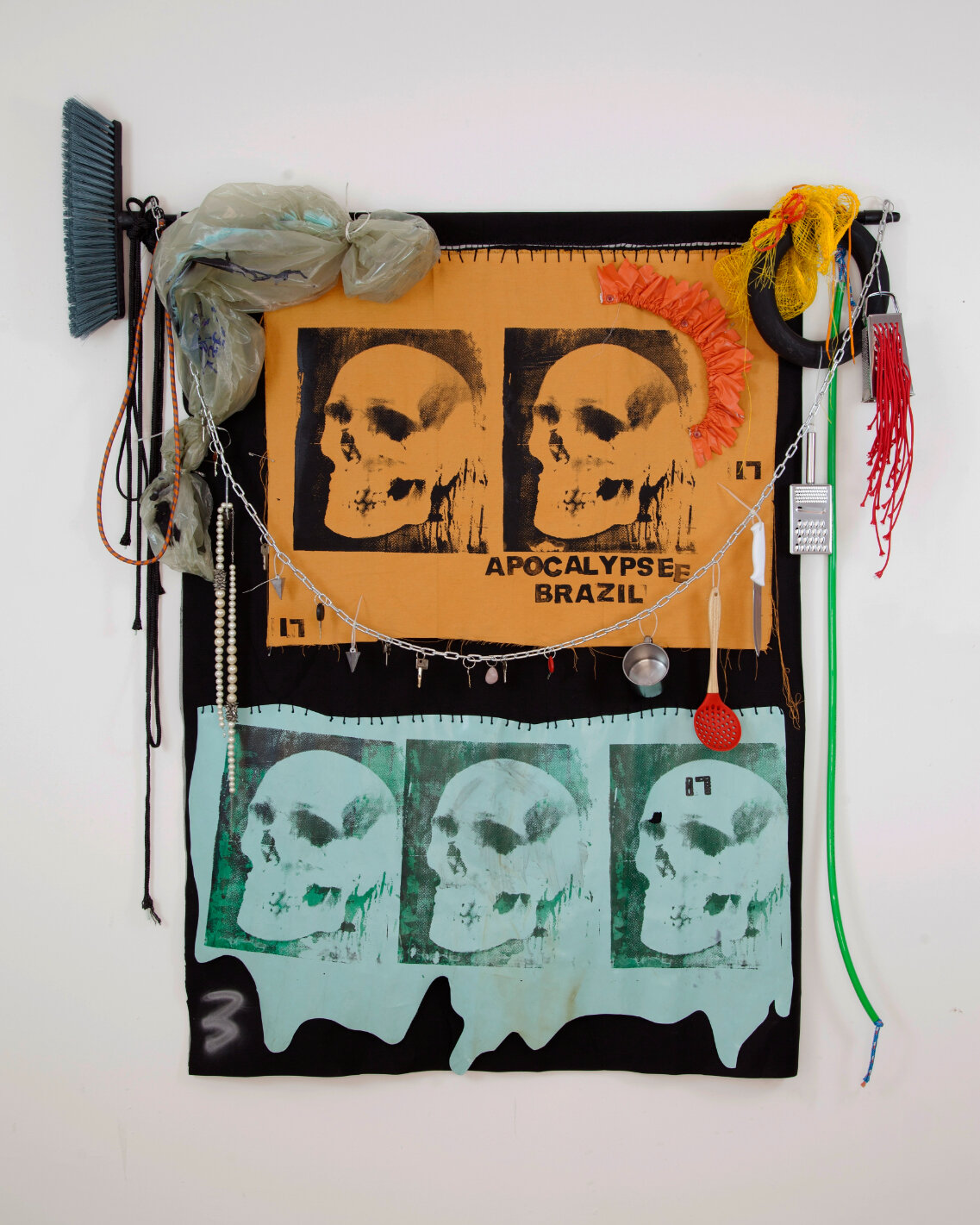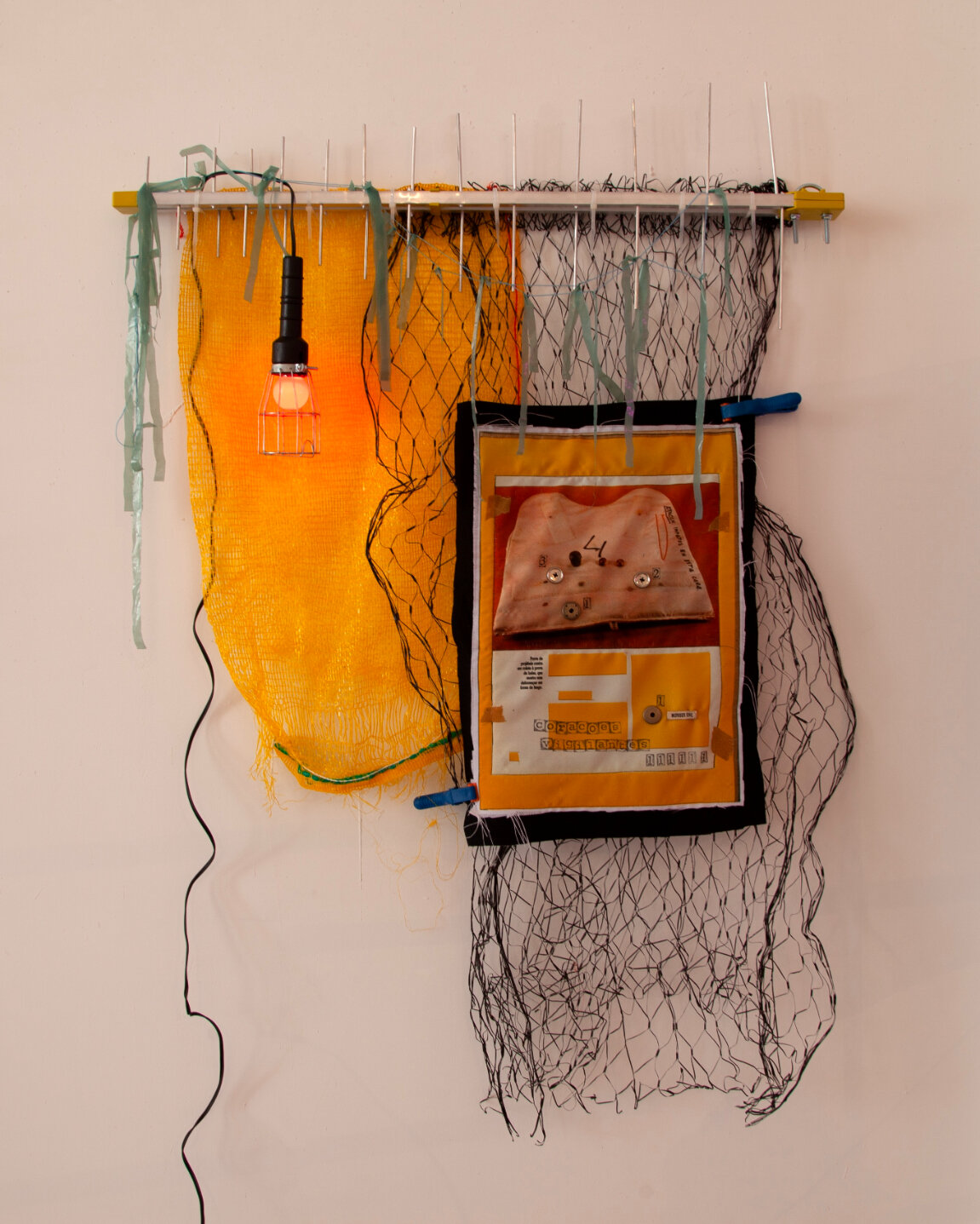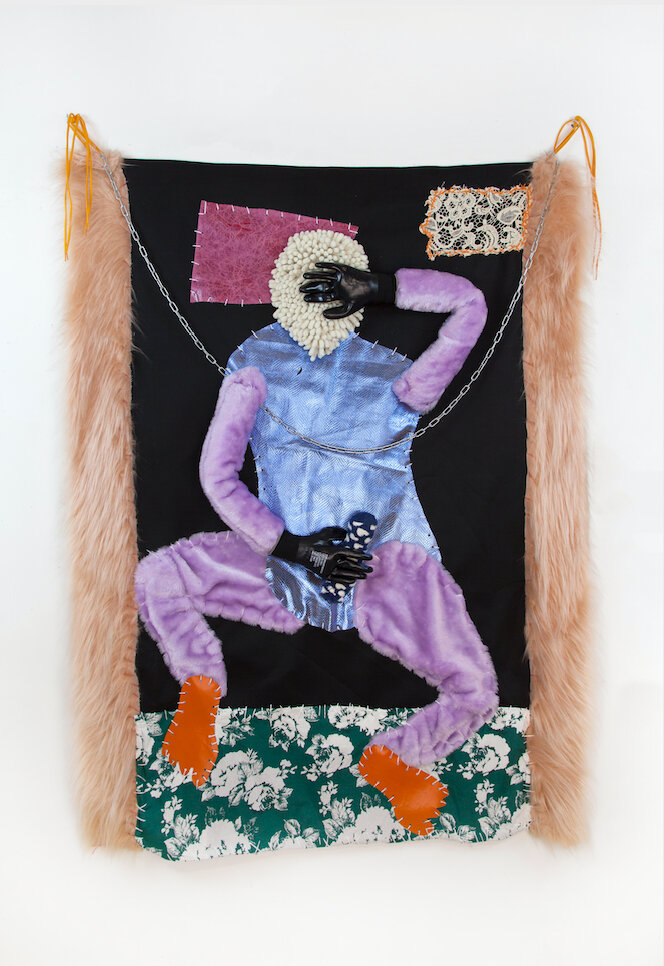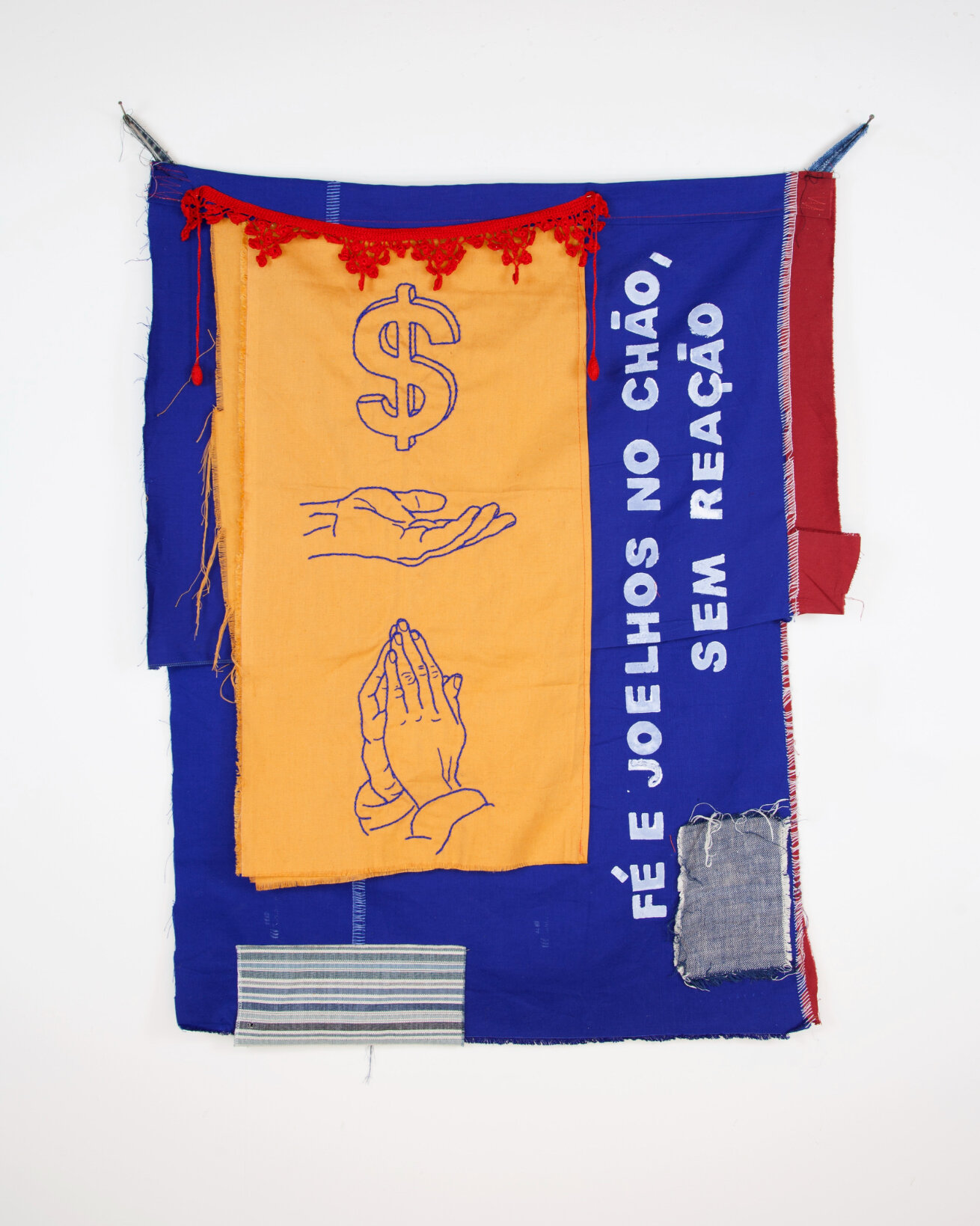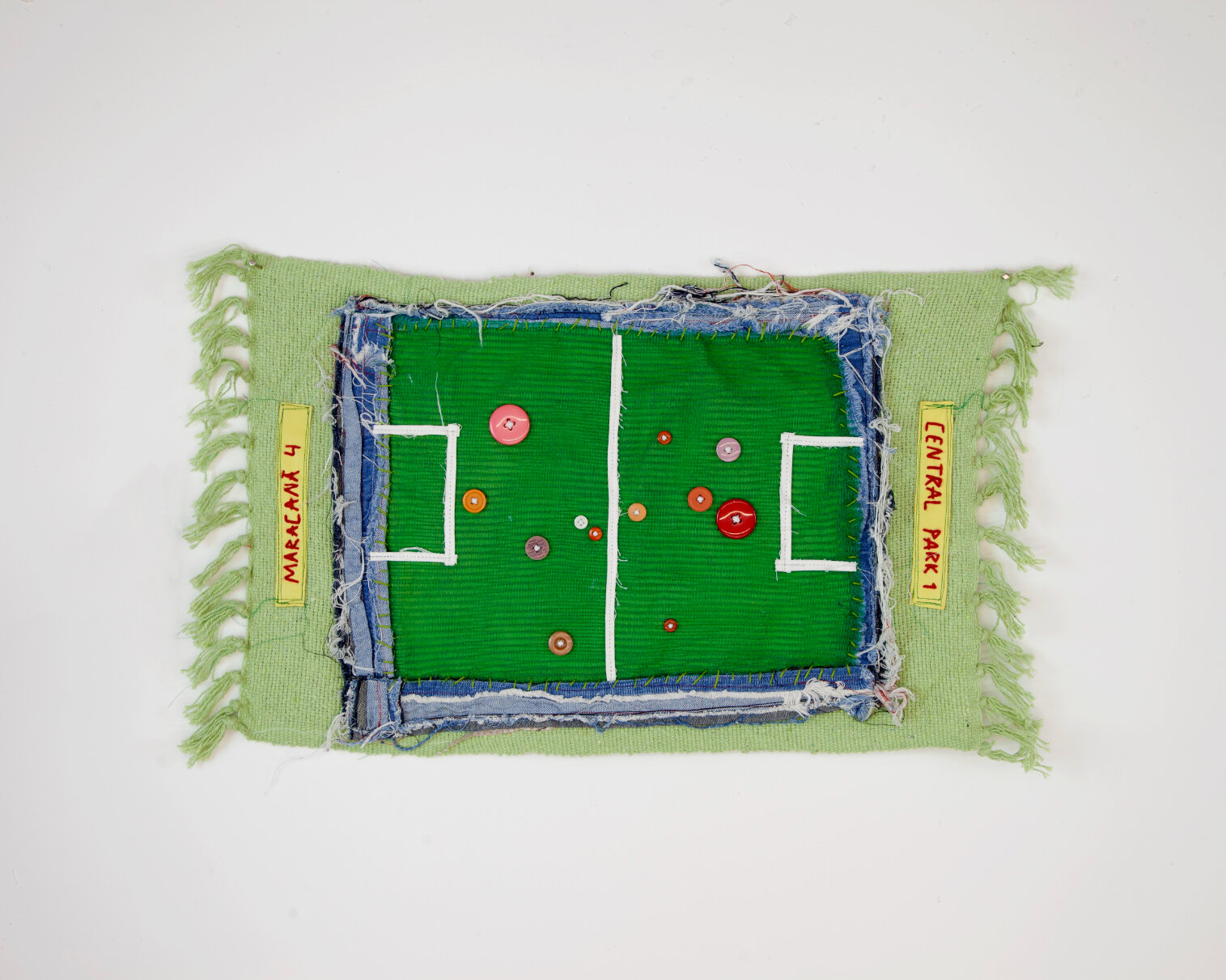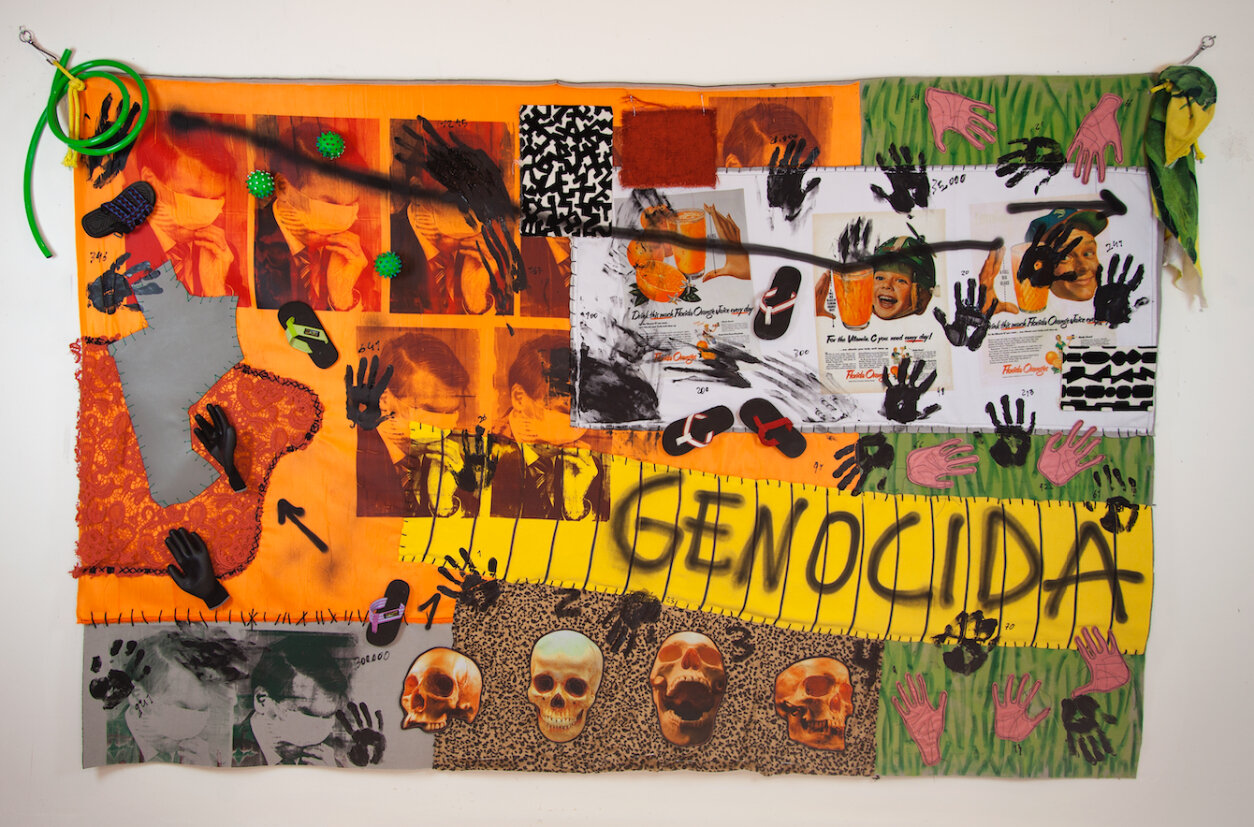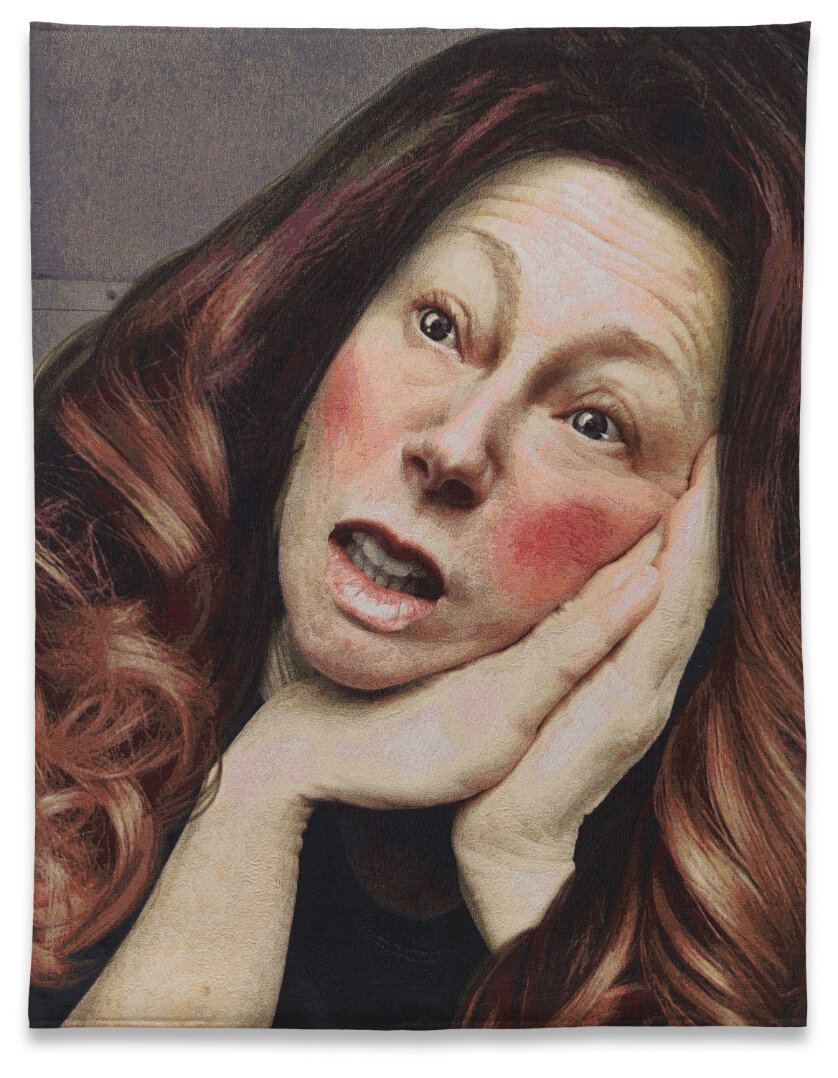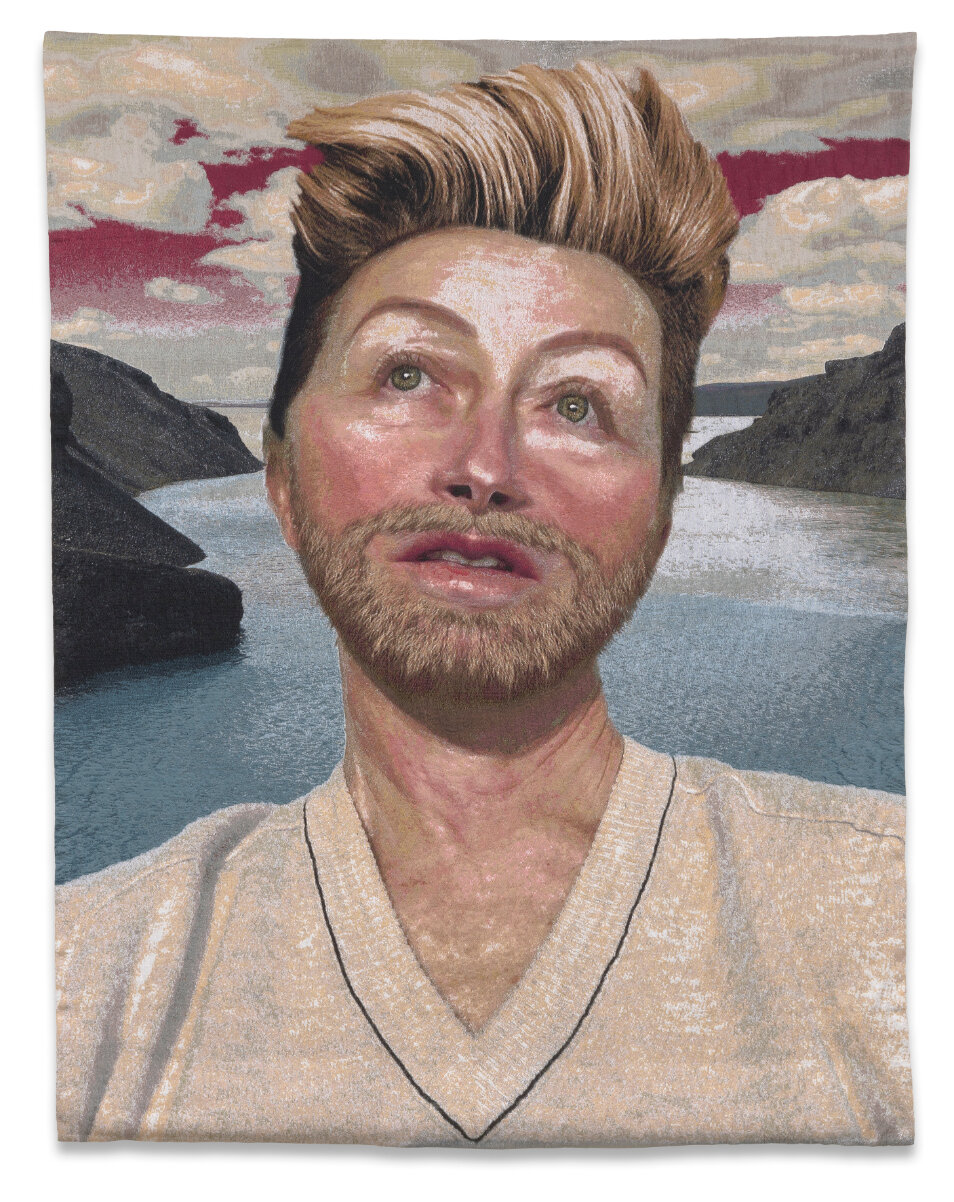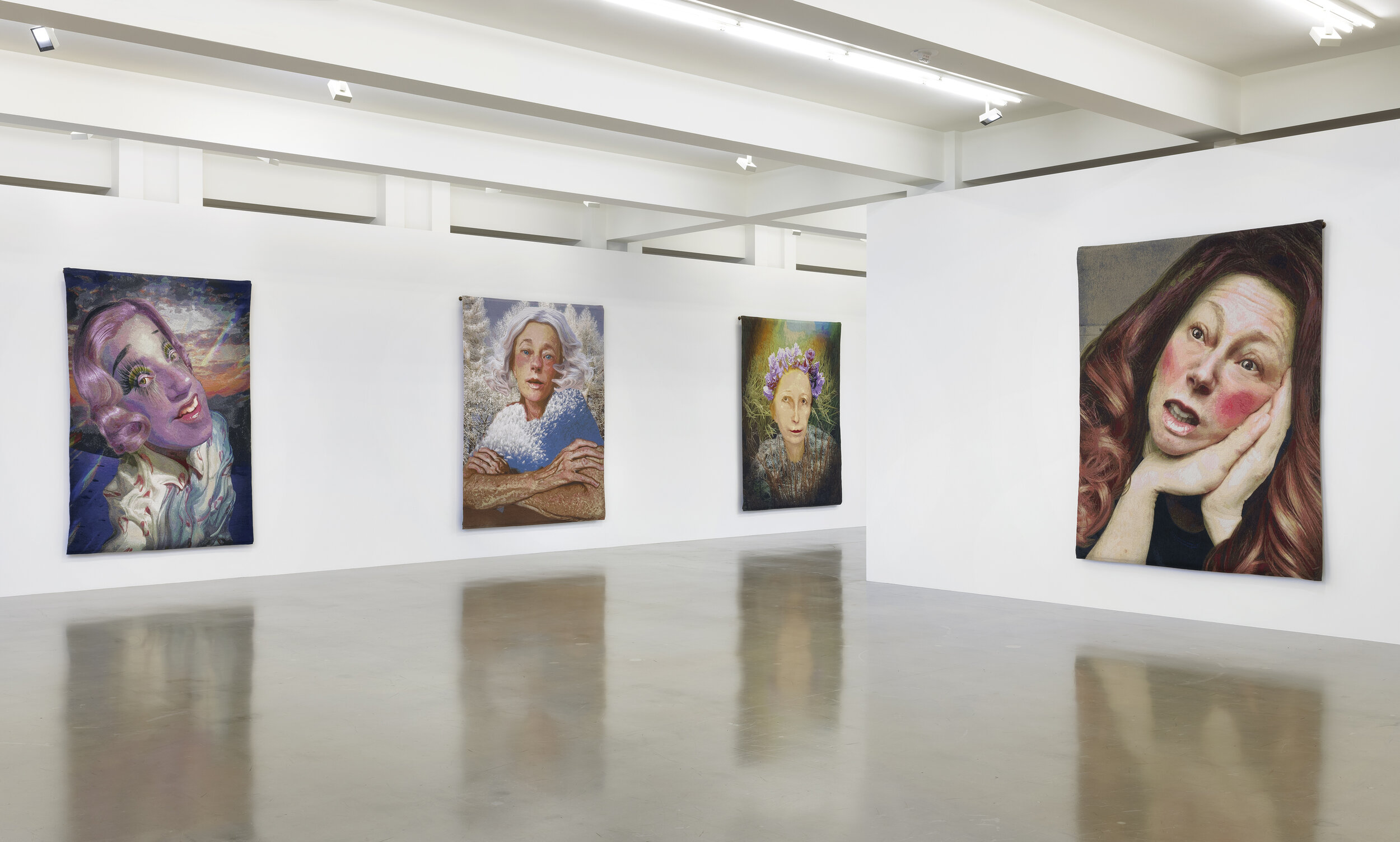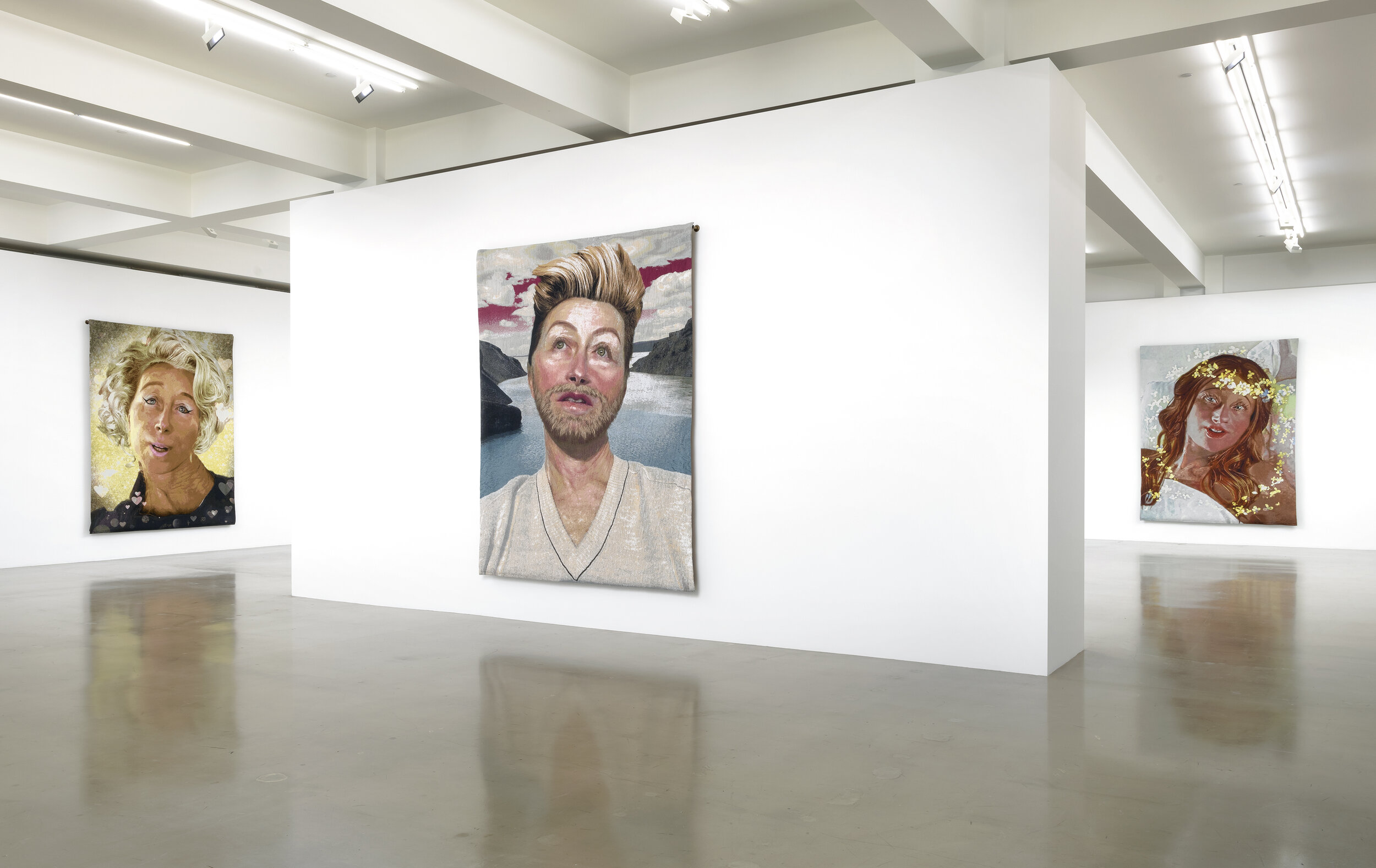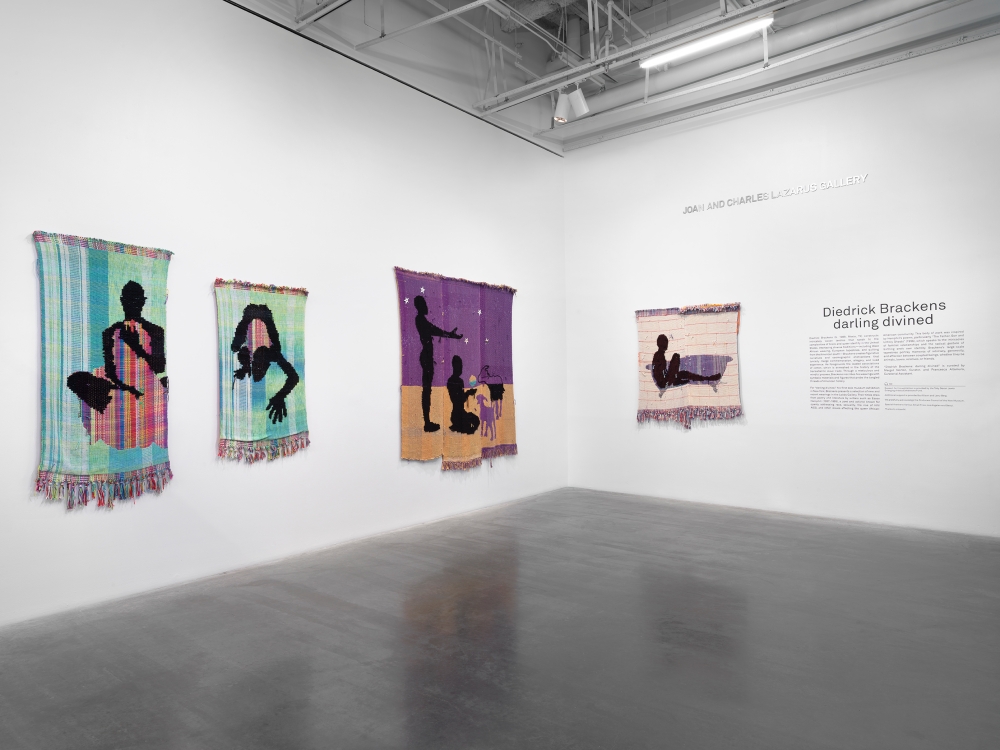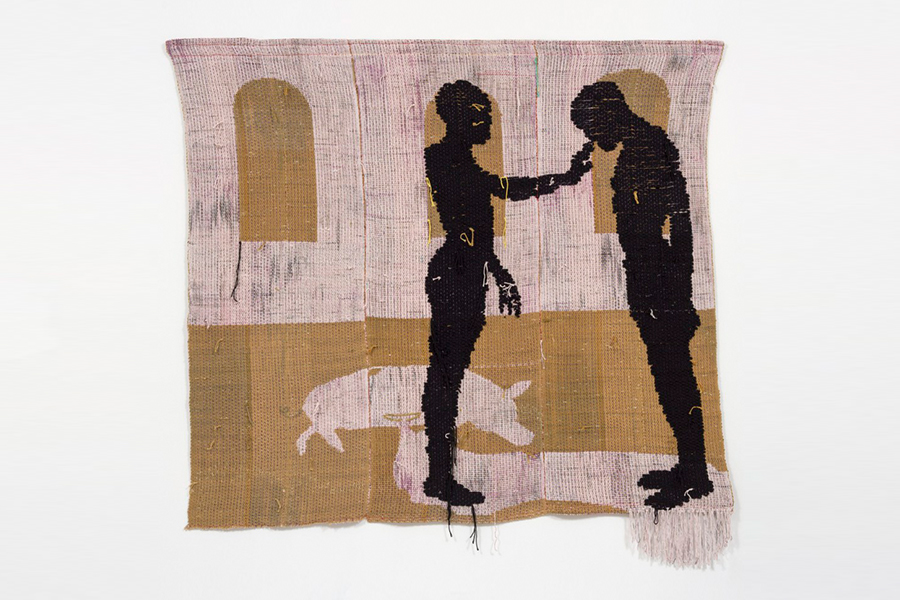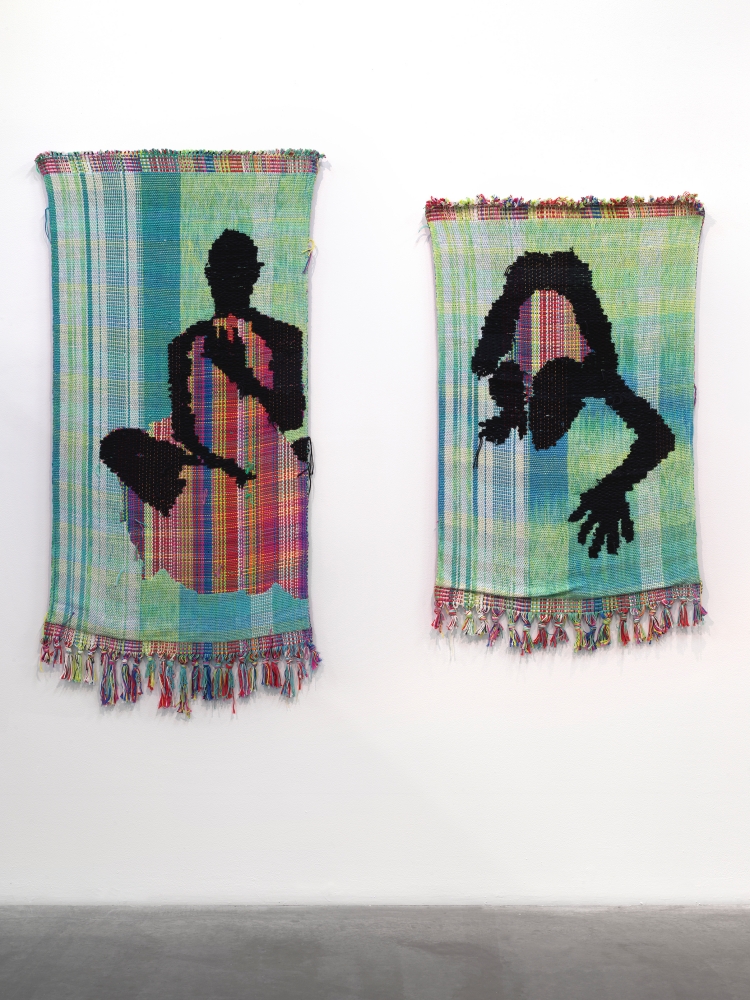In Pierre le Riche’s current exhibition, In Four Places at Once, the artist creates vivid figurative wall tapestries that center his queer identity while reflecting on the complexities of belonging in a contemporary world. Identity is woven into and essential to le Riche’s practice; much of his work has been aimed at challenging norms and associations around gender and sexuality and confronting themes of colonialism and white privilege. The group of artworks on show emerged from a period of internal struggle as le Riche acclimatized to a new environment following his move from Cape Town to Aachen, Germany. In this light, le Riche’s choice of tufted yarn as a material, reminiscent of cozy household textiles, feels fitting to conjure a homesick state of yearning and introspection. Le Riche’s use of craft – elsewhere in his practice he also employs embroidery, sewing, and crochet – tosses out outdated notions of gendered art forms. Through his homoerotic content, le Riche pushes back against the conservativeness of a middle-class, suburban upbringing in Post-Apartheid South Africa. His cartoonish nude figures, some sporting exaggerated genitalia, can be read as playfully provocative and unapologetically gay, testing the boundaries of puritanical sensibilities. Simultaneously, his characters are contorted and dislocated in space, imbued with vulnerability, uncertainty, and longing.
In Four Places at Once is on view through March 28th at Ronewa Art Projects, Potsdamer Str. 91, 10785 Berlin.

